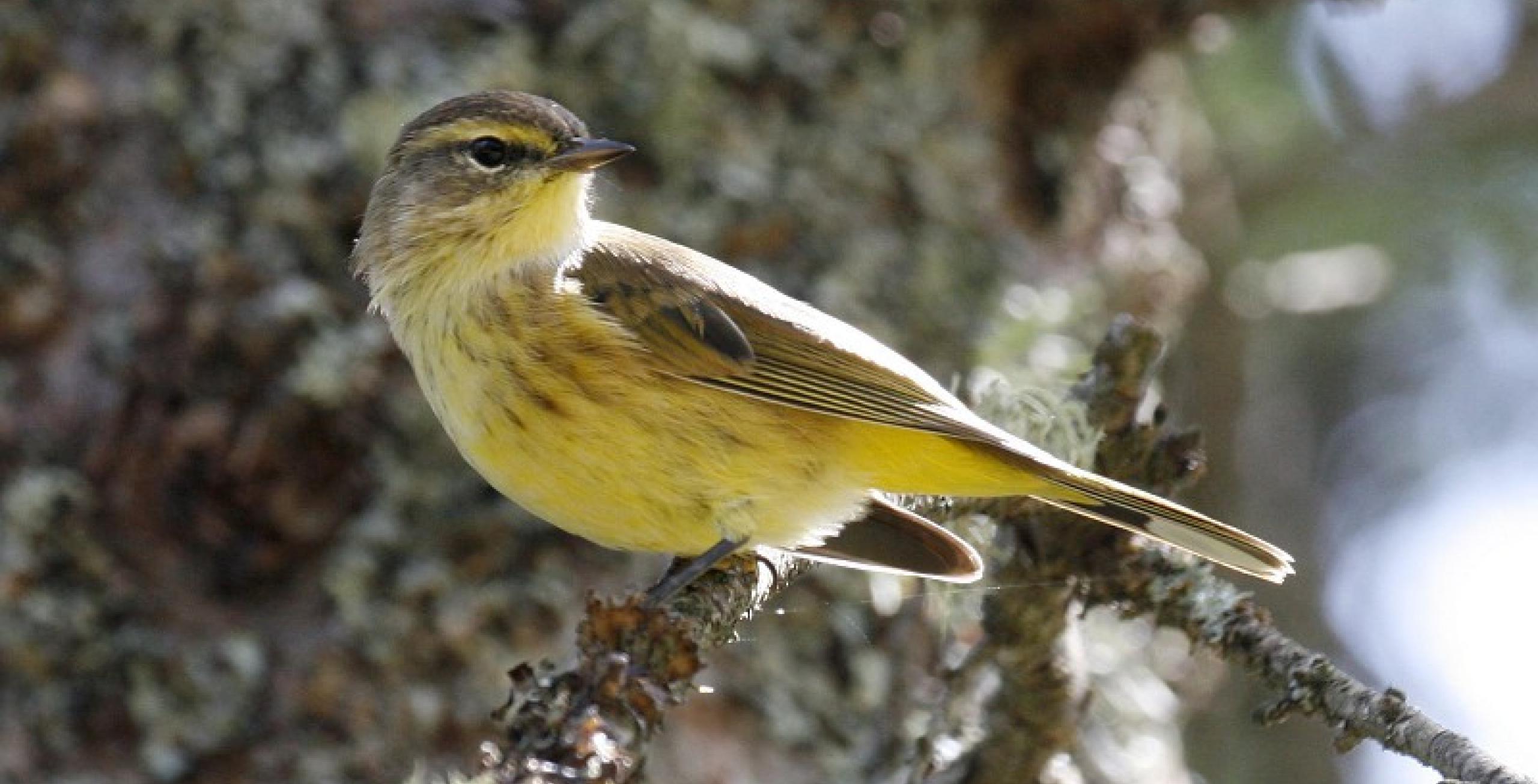Hitchins Bog
Hitchins Bog is a spreading strip of boreal habitat which sits in the southeast corner of St. Lawrence County, a short distance south of Tupper Lake and a stone’s throw north of the Hamilton County line. It is accessed along a railroad bed either by walking south from Horseshoe Lake or by walking north along the bed from the end of Sabattis Road in Hamilton County. Either way you approach it, the railroad bed takes you through a variety of habitats and offers you a long list of birds as a result.
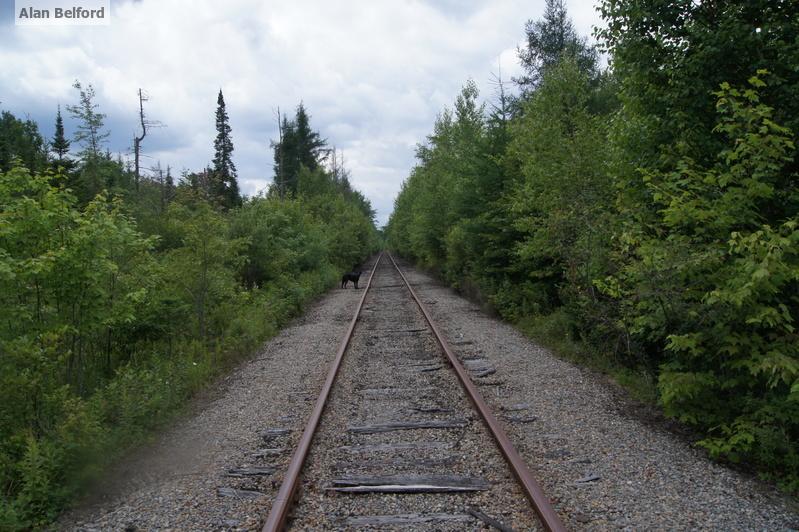
On my recent trip to Hitchins, I started from the northern end of the tracks – still wet from the prior day’s rain – and I walked south through a mixed forest surrounded by a retinue of bugs. The humid air was to their liking. Such is life in the Adirondacks at this time of year, so anyone exploring Hitchins should be prepared for them. Anyone going there should also be prepared for the uneven footing of the railroad bed – the ties are still in place and falling apart, so I usually walk on the side of the tracks which may be crowned in some places.
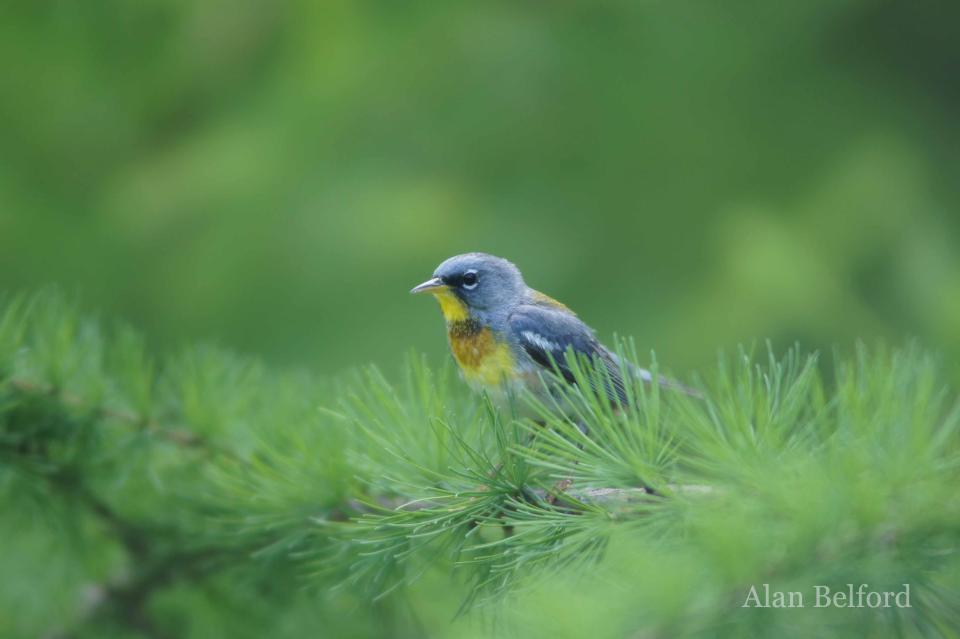
Despite these caveats, the area is full of birds, and I was soon beginning a list which included Black-throated Blue Warblers, Northern Parulas, Blue-headed Vireos, Winter Wrens, Black-and-white Warblers, and loads of Magnolia Warblers. I also spooked a contingent of Ruffed Grouse chicks from the side of the tracks, the mother puffing up and aggressively strutting toward me to ward me off while the chicks scuttled to safety. I certainly meant them no harm and I quickened my step to avoid stressing them – the mother fluttering off to join her chicks once they were safely in the woods.
Bog River and the bog itself
About a mile into the hike I reached the bridge which crosses the Bog River on its way toward Hitchins Pond from which the bog spills. The habitat changes markedly, with marshy habitat along the river framed by shrubby edge habitat and alders, and the air was filled with the songs of Swamp Sparrows, Song Sparrows, Red-winged Blackbirds, and Chestnut-sided Warblers as a result.
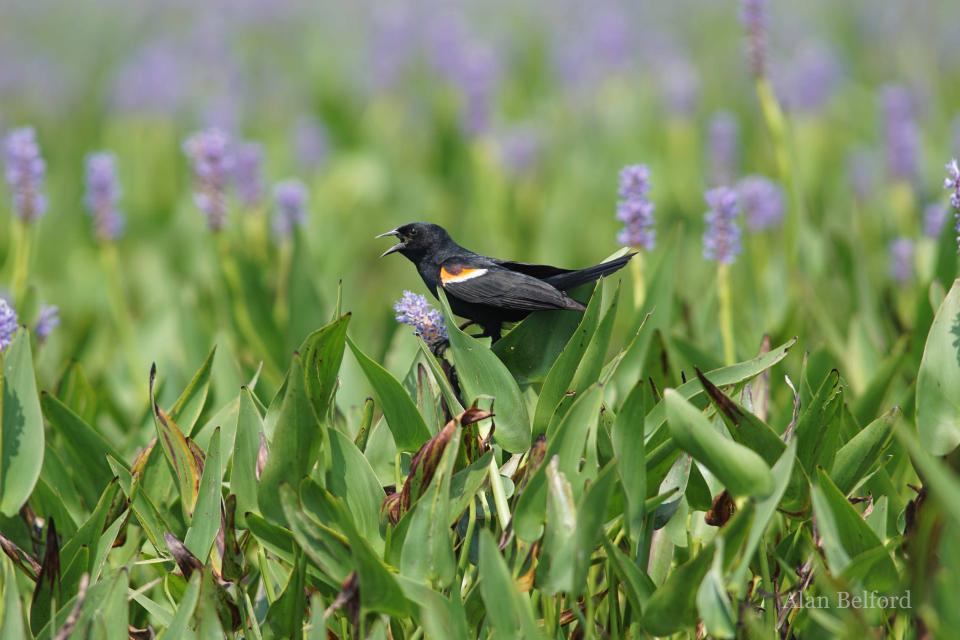
There was also a pair of Eastern Kingbirds hawking insects (something for which I was grateful) on the wing, and I heard my first Alder Flycatcher of the hike, while Pine Warblers sang from the tall white pines which guarded the paddling route along the river. Last year when I walked into Hitchins I had found a smooth green snake in that area, so I kept an eye on the path in front of me, spotting a few eastern garter snakes as a result.
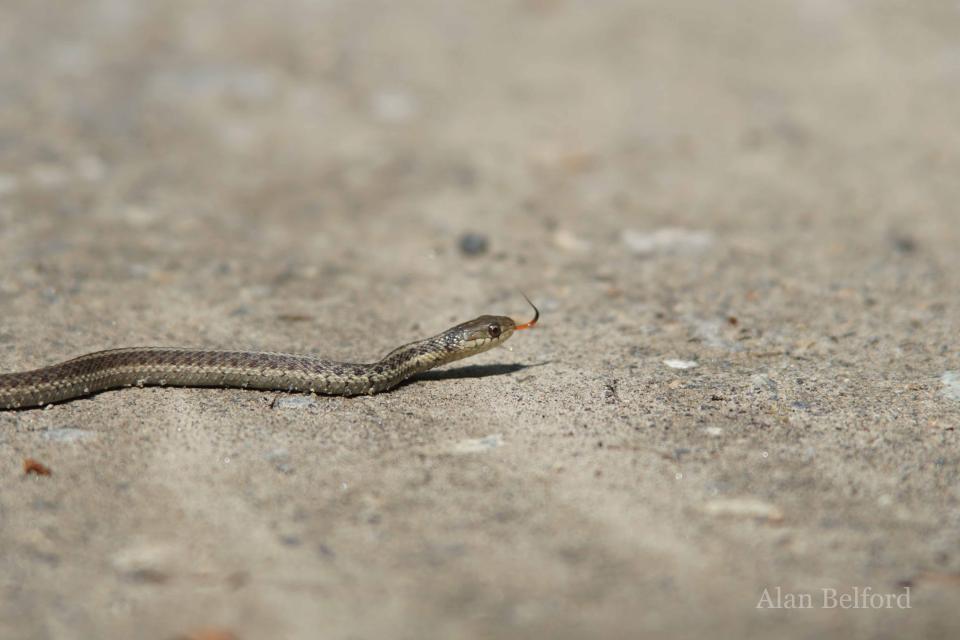
The railroad tracks rounded a wide curve, leading me to the wide-open bog itself, and I was soon adding singing Palm Warblers and Lincoln’s Sparrows – the bog is excellent for such boreal denizens - as well as Savannah Sparrows for which the open bog offered suitably similar habitat to their preferred grasslands. White-throated Sparrows sang from all directions and I watched the aerial grace of Tree Swallows and Chimney Swifts scooping up bugs overhead.
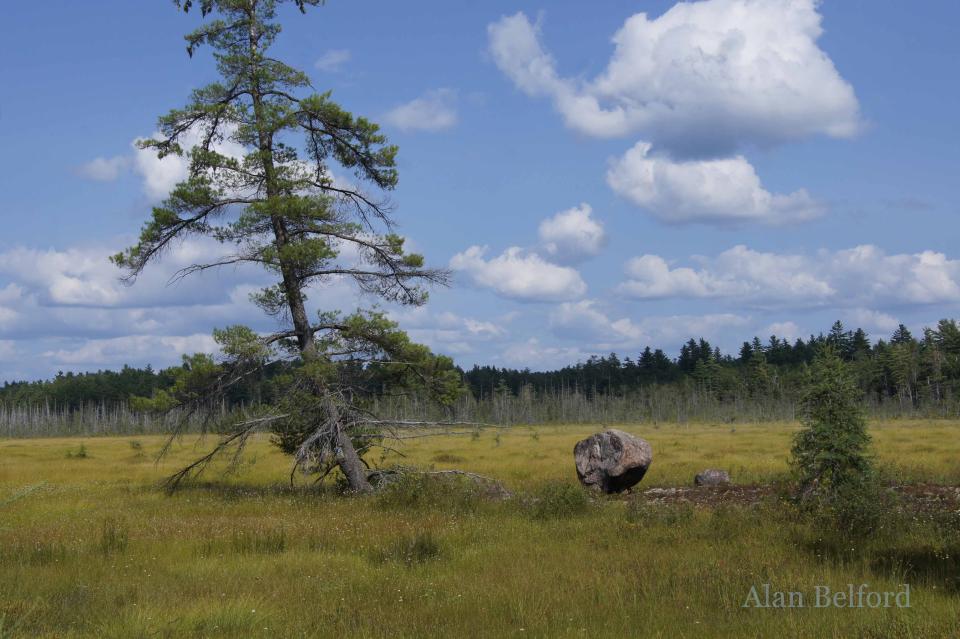
The light breeze and warming sun in the open bog also knocked back the mosquitoes which had been harassing me, and I was left with only a small solar system of deer flies. This made stopping for birds more enjoyable and I was soon listening to the songs of Nashville Warblers and Yellow-bellied Flycatchers, and more Magnolia Warblers from the woods bordering the bog. I was also hoping for an Olive-sided Flycatcher or Black-backed Woodpecker, but neither showed themselves on this day. That’s okay – you never find everything – and I continued my walk through the bog, pausing for birds and photographs.
Continuing my day
Eventually, the warm sun had hushed the birds enough that I decided to turn around and walk the better than 2.5 miles back out to the car. But I continued to bird along the entire route as I went, adding species such as a flyover Wood Duck at the Bog River, as well as a family of Canada Geese. I also came across what I’m sure was the same Ruffed Grouse family on my way out which I had seen on my hike in – the mother once again angrily scolding me and the chicks scurrying for cover. They must have found some good feeding directly along the tracks since they kept hanging out there.
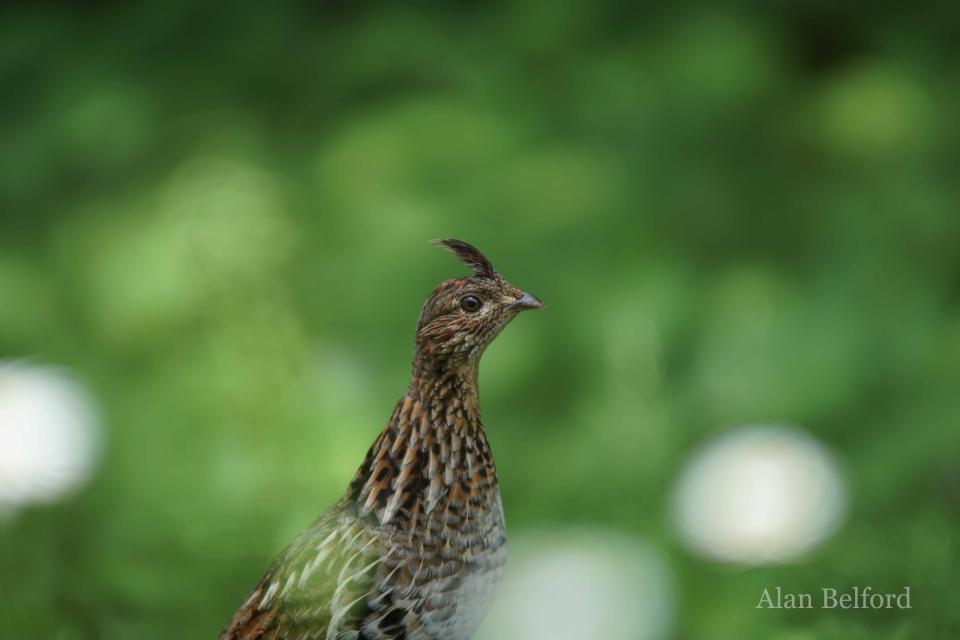
I returned to my car, grabbed a snack and some water, changing out of my long clothes which – although helpful in protecting me from bug bites – were rather warm at that point in the day. Refreshed, I drove back out Route 421, turning south on Route 30 before soon turning onto Sabattis Circle Road. The mid-day sun had quieted the bird life quite a bit at this point, but I still stopped at Sabattis Bog where I heard some of the same species I had found in Hitchins – including Palm Warbler and Lincoln’s Sparrow.
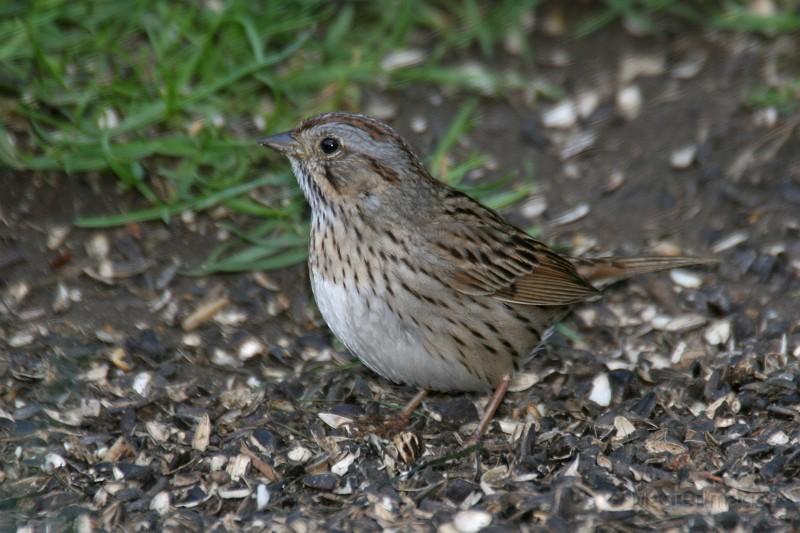
I then headed along Sabattis Road (where the western end links with the southern end of the railroad tracks which lead you into Hitchins). But I didn’t go that far. Instead, I turned into the DEC facility on Little Tupper Lake where I filled up with fresh water and sat in the breezy shade eating my lunch at the beach. It’s difficult to find a better way to celebrate a good day of birding than that.
Summer is in full swing and outdoor adventures and birds are everywhere you look in the Adirondacks. Plan your trip today by checking out our lodging and dining pages.

